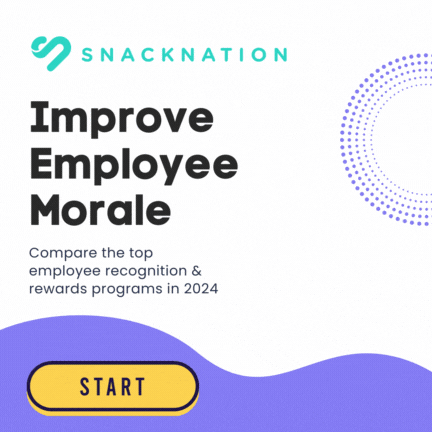There are so many reasons to love being an early-stage CPG entrepreneur right now.
Access to capital, low barriers to entry, alternative retail channels that meet consumers where they are, not to mention a rapidly growing consumer base that craves brands that don’t just make a profit, but make a difference – it all adds up to massive opportunity for the right kind of emerging brands.
But the conditions creating this opportunity also present new challenges. Competition among brands is also at an all-time high. The consumer is faced with a virtually endless array of choices.
From a brand’s perspective, this intense competition means the margin for error is razor thin. One wrong move can spell disaster.
It’s what myself and others are calling the problem of “Infinite Supply.”
This dynamic has long been at play in the software industry, where the digital nature of the product means you literally have an infinite supply to sell.
As consumer choice explodes, I’d argue that we’re currently approaching Infinite Supply in CPG, even though we’re selling a physical good rather than a digital one.
I recently came across this idea again in This Won’t Scale, an amazing little book put together by the Drift Marketing team. Here’s the relevant passage:
“You can only achieve hypergrowth by being close to the customer… We realized that in a world of infinite supply, the customer has all the power.” (p. 7)
In other words, in our era of Infinite Supply, the brands closest to the consumer win.
That’s all fine and good, but what does that actually look like? Here are four ways to get close to your consumer and beat the competition in the era of Infinite Supply.
1. Focus on Brand Innovation, Not Product Innovation
There’s no denying that having a great product is a must-have. To paraphrase Clayton Christensen, your customer hires your product to do a job, and it has to do that job better than the competition.
But that doesn’t mean that you need to endlessly innovate your product – or that your product should even be your key differentiator.
Trying to differentiate purely on product innovation is a recipe for failure in the era of Infinite Supply. What I end up seeing most of the time is unnecessary product innovation – that is, innovation that doesn’t address core consumer needs or help realize consumer aspirations.
Brands should focus just as much – if not more – of their efforts on brand innovation.
There are few better examples of brand innovation than Hippeas, the better-for-you extruded puff brand founded by Livio Bisterzo of Green Park Brands.
Hippeas was built with a consumer-centric approach that addressed emerging consumer needs and aspirations via brand, not product.
“This vision was to build a brand first,” Livio recently told me when I interviewed him for the Brand Builder podcast. “The way I build brands, the consumer always comes first. The question was always, how do we make you feel like you have a real sense of belonging from the beginning? How do we make you feel a part of our journey? That was always the number one priority.”
Livio knew exactly what his customers aspirations were over a long future and planned his brand narrative across that entire future.
This narrative was so strong, Livio landed a national distribution with Starbucks before they even had a product. Starbucks was sold on the strength of the story alone.
2. Learn What Your Core Customer Cares About
Getting close to your customer isn’t just about proximity (although that’s part of it). It’s about knowing your customer’s needs and aspirations. Who do they want to become? How can your product and brand guide this positive transformation?
The only way to do this is to have continual two-way conversations with your customer.
It’s less about broadcasting your message and more about listening, especially early on. Your job is to learn about your customers so that you can be great in ways they actually care about.
This also might mean being purposefully poor in areas that they don’t care about as much – so that you can go above and beyond in the areas that really do matter.
Data is a must here, both the scientific and the conversational kind. You need both types of data in order to get the full picture. It’s one reason we launched SnackNation Insights – to give brands rapid, affordable access to customer data, so they can learn what their customers actually care about.
3. Be Where Your Customers Are
You need to be where your customers are, period. This applies not just to distribution, but to trial and marketing too.
Don’t expect to be discovered on a crowded retail shelf. Your retail strategy should include alternative channels that meet your customer where she spends her time. That might mean offices or co-working spaces, gyms, ride-share vehicles, or even cultural events like music festivals. In other words, become a part of their life not just their shopping experience. This is the biggest reason why SnackNation focused on building out our enterprise channel first.
I always tell brands to invest heavily in trial. If you have a good product, your goal should be to get as many people as possible trying your product. The key is to create trial opportunities that the mirror the use-case as closely as possible.
The same goes for your marketing. Choose the platform where your customer spends their time and that align with the use-case. If your brand is consumer focused, Instagram. If it’s more focused on young professionals, LinkedIn might be a better bet. Invest in unique content that doesn’t suck and is aspirational, that helps people get to where they want to go in life.
4. Own Your Relationships
Lastly, as much as possible, you need to own your relationships. Because brands are relationships.
We must think of our customer being a friend, someone you really understand, and not just at one point in time, but continually over time, as your customer changes.
I’m astounded by how many brands are content with doing the bulk of their e-comm business on Amazon, and therefore giving their customer relationships away. Yes, Amazon must be part of your retail strategy, there’s no getting around it. But disproportionately relying on the Amazon ecosystem means limited customer visibility and no ownership of those important relationships.
The smart strategy is to own your customer relationships as much as possible. That’s why an email list is still one of the most valuable marketing tactics out there.
How do you remain close to your customer? Let me know your most reliable tactic in the comments.












